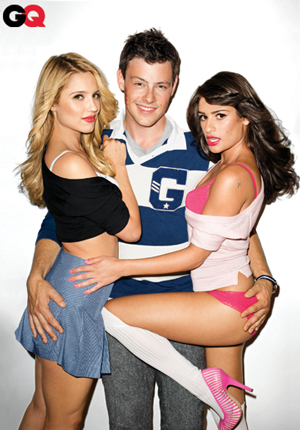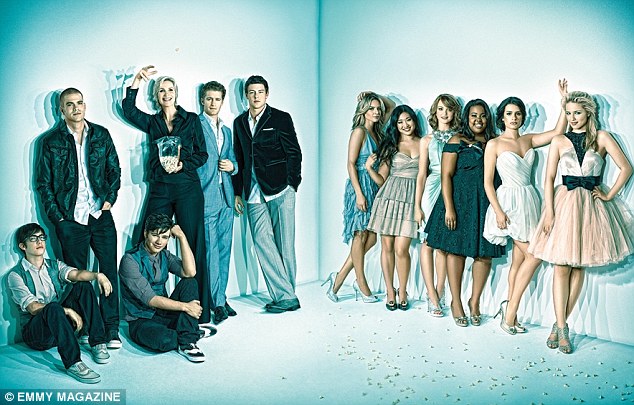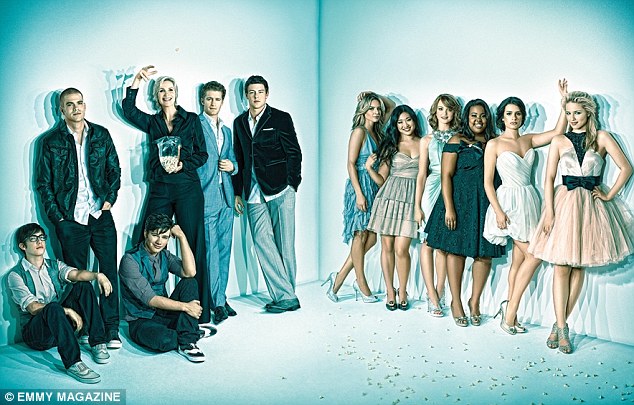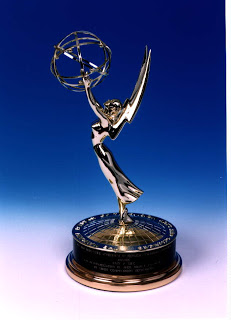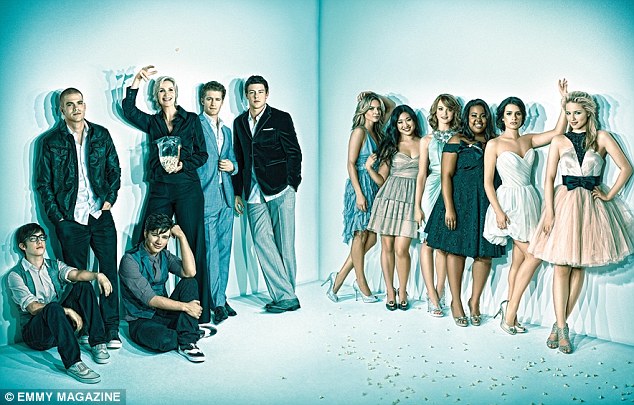This piece by Fannie previously appeared at Bitch Flicks on October 27, 2010.
 |
| No |
I love Glee. I sometimes am annoyed by it, but generally, I appreciate its ode to geekiness. I also do sometimes like looking at photos of attractive women (and men), if the photos are tastefully done and don’t seem like they’re completely exploiting the person. And subtlety is good. Subtext, to me, is often sexier than in-your-face displays of sexual availability.
Those disclaimers aside, I could now go on about how these photos at once infantilize adult women by portraying female actresses as sexy schoolgirls while also inappropriately sexualizing these characters, who are supposed to be under the age of 18.
I could also talk about how annoyingly predictable it is that, of all of Glee’s diverse cast members, it is the two women who most conform to conventional Hollywood beauty standards who have been granted the empowerful privilege of being sexified for a men’s mag. For, despite Glee’s idealistic and uplifting message that It’s What’s On the Inside That Counts, the show’s resident Fat Black Girl With A Soulful Voice is noticeably absent from the shoot.
And then there’s the fact that it’s titled Glee Gone Wild! a not-so-subtle allusion to that paragon of klassy art that made Joe Francis a pimp wealthy man. Yeah, I could talk about how that’s not my favorite.
We could also explore how the photos are clearly intended for the heterosexual male gaze (or, say, the gaze of a sexually abusive photographer who talks about how his “boner” compels him to want to “dominate” girls) and his sexual fantasies.
And I will talk about that for a minute, actually.
GQ is a men’s magazine, so while some lesbians and bisexual women might be titillated by such images, they should not be so naive as to think it is they who are the intended recipients of these images. Finn, the football player, is perhaps the one dude on the show who Average Joes most identify with. In GQ’s slideshow, he is almost fully clothed in regular streetwear throughout and often adorned with the Ultimate Straight Male Fantasy of not one, but two, hot chicks who might first make out with each other and then subsequently have sex with him.
As for the women depicted, the images predominately feature the two actors wearing the sexy-lady Halloween costume known as Sexually Available Schoolgirl, thus letting gay men know that this photo shoot about characters in a musical TV show is not intended for them, either.
Which brings me to the self-indulgent, possibly shallow, item I really want to talk about.
See, well, Glee used to be our thing.
The geeks, the losers, the queers, the disabled, the atheists, the dudely jock who likes to sing and dance, the pregnant girl, the teen diva, and the male Asian actor who is supposed to be geeky-cool but who never gets a speaking part in Glee solo. The popularity of Glee has been Revenge of the Nerds all the way and for that reason it has been pretty, dare I say, special to a lot of marginalized people and teenagers in all its campy dorkwad glory.
But now, the GQ photo shoot has subverted geekiness to give heterosexual men yet another thing in this world that can be, erm, special to them. And what’s supposed to special about Quinn and Rachel in these photos is not their voices, their struggles, their dorkiness, their self-centeredness, their insecurities, or their dreams, but rather, the never-been-done-before message that it’s women! Who are hot! And young! And thin! Who men want to fuck!
GQ, on behalf of its straight male readership, flaunts Rachel and Quinn in these photos like Sue Sylvester boastingly displays her ginormous cheerleading trophies as yet another reminder to the geeks that “not everyone can be champions” because some people are meant to dominate and others to be dominated. The photos are the equivalent of a major studio finally producing a Xena movie, writing in that long-awaited for Xena/Gabby actual make-out scene, and then having the two main characters end up married. To men, that is. Because what heterosexual men would like to see happen to two female characters is, let’s face it, always what is most important when it comes to TV and film and to hell with any other major fan base.
Glee should know better.
Trying to be popular by catering to the “I only watch shows with multiple major female characters if they’re hot” crowd might make a couple of dorks cool for a while, but it’s also why the rest us can’t have nice things.
